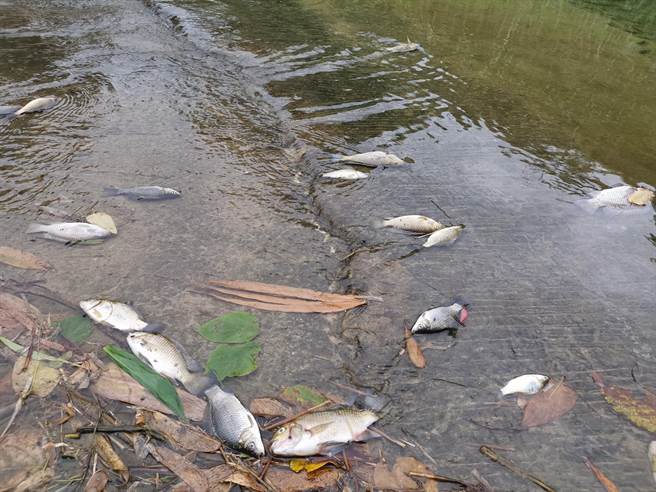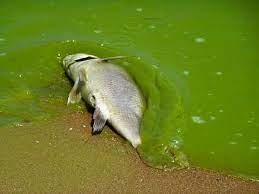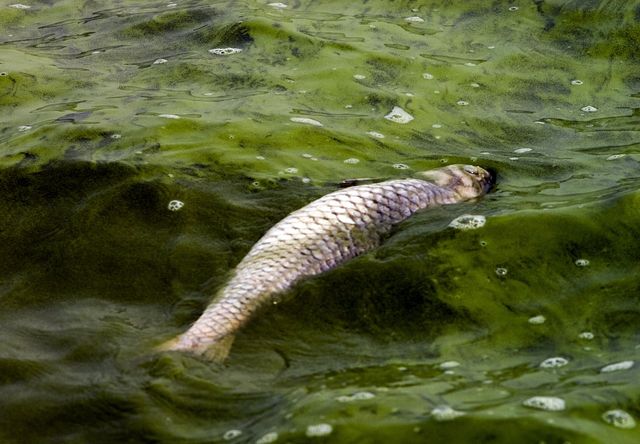Cyanobacteria, also known as “cyanobacteria”, are photoautotrophic prokaryotes widely distributed in water bodies around the world. They are also the earliest photoautotrophic organisms on earth. Cyanobacteria are a type of prokaryotes that perform oxygenic photosynthesis. Cyanobacteria belong to the phylum Cyanobacteria, which is divided into 4 orders: Chroococcales, Oscillatoriales, Nostocales, and Stig onematales.
Large-scale blooms of blue-green algae are called “blooms.” Common algal species in cyanobacteria blooms include Microcystis in the order Chromococcus and Anabaena in the order Oscillatores. The harm of cyanobacteria blooms is mainly manifested in the following three aspects.
- The explosive growth of algae consumes a large amount of dissolved oxygen in the water body, causing the death of fish, shrimp, shellfish and other species in the aquatic community. The species tends to be single, and the functions of the water body are degraded, leading to the imbalance of the entire ecosystem.
- The massive growth of algae reduces the transparency of the water body, and a large number of submerged plants die. After the death of the algae, toxic substances and fishy odors are emitted, which not only affects the water body landscape but also affects the surrounding air quality.
- Algae that form algae can produce a large amount of algal toxins, causing water pollution. Algal toxins mainly include hepatotoxins, neurotoxins and endotoxins, which can enter the human body through the digestive tract and cause diarrhea, nerve paralysis, liver damage, and even death in severe cases.

- Causes of blue-green algae outbreaks
- The higher the temperature and the stronger the light, the faster the cyanobacteria will grow; the suitable temperature for the growth of cyanobacteria is 28°C to 35°C. The occurrence of cyanobacteria is largely dependent on temperature. Cyanobacteria are sensitive to temperature when they reproduce. When the water temperature is below 17°C, they will not occur in large numbers or cause harm to fish. When the water temperature rises to 28°C, cyanobacteria can easily form dominant populations and explode in large numbers because the growth of other algae is inhibited and a large number of algae are eaten by fish (high temperature fish feeding metabolism increases).
- Algae like alkaline water bodies, and high pH (pH 8.0-9.5) will promote the occurrence of blue algae. Therefore, the single method of splashing lime water to improve water quality should be avoided.
- Cyanobacteria can not only use the nitrogen in the water body, but also have a higher ability to utilize phosphorus, low nitrogen-phosphorus ratio or high phosphorus eutrophication of water bodies may lead to a large number of cyanobacteria, they have a high resistance to adverse environment and general nitrogen fixation ability, in the anoxic environment when other algae can not reproduce, only cyanobacteria can multiply. In the algal filament of some cyanobacteria, some cells differentiate into resting spores, which are dormant bodies, and there are storage nutrients in the package, which can resist adverse environmental conditions and form algal filaments under suitable conditions.

4. Cyanobacteria have the growth characteristics of general algae: its life cycle is about 30 days, and the entire life cycle can be divided into three stages: growth period, peak period, and aging period.
5. Cyanobacteria, together with other algae, constitute the producers of the pond ecosystem, providing more than 89% of dissolved oxygen. Therefore, in addition to participating in the material cycle of the ecosystem, these producers also affect the survival of fish.
6. Some aquatic higher plants not only absorb nitrogen and phosphorus nutrients in the water during their growth, but also secrete some allelopathic substances. Allelopathic substances can inhibit the photosynthetic activity of algae cells by destroying the structure of algae cells, and damage the contents of algae cells. Protein activity affects the activity of key enzymes and other ways to inhibit the growth of algal cells.

How to prevent and treat
- Sediment dredging, artificial re-aeration, ecological water diversion, etc.
- Use sensors for real-time monitoring for prevention.
